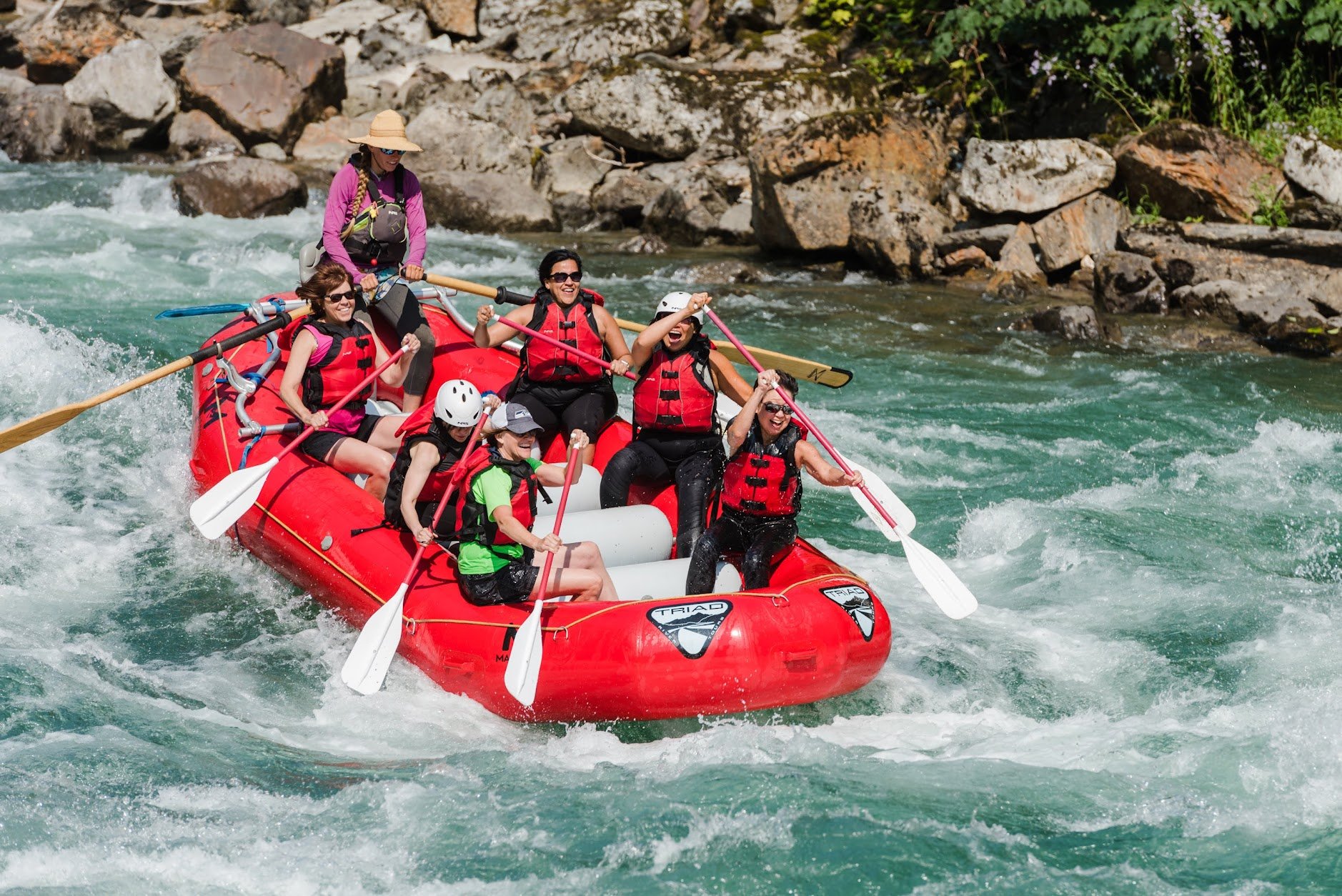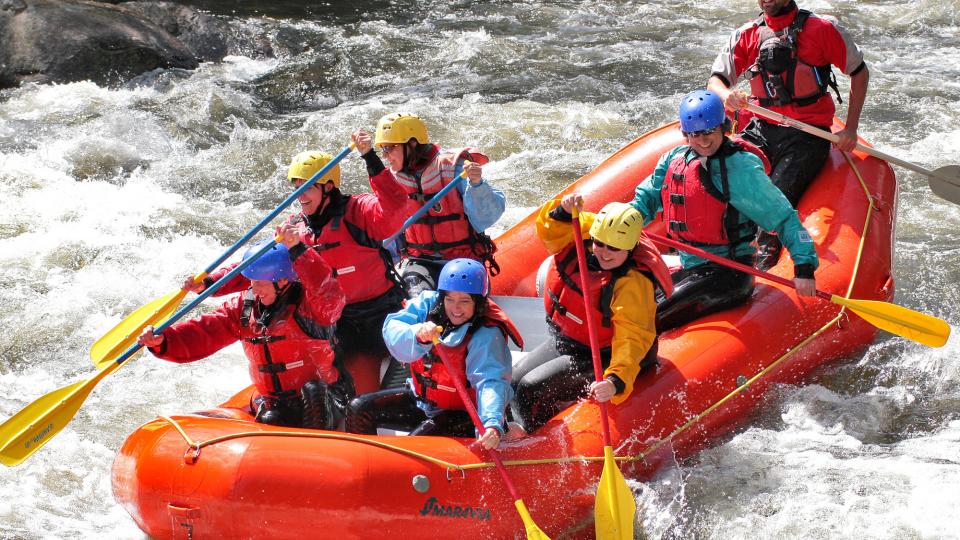Necessary Abilities for Water Rafting
Mastering the art of water rafting needs a combination of specific skills and expertise to navigate the unforeseeable currents of rivers, making it a thrilling yet possibly hazardous task. As lovers get ready to start their following experience, it is critical to equip oneself with crucial proficiencies that exceed simply paddling. From recognizing the intricacies of river dynamics to swiftwater rescue techniques and seamless group communication, the trip down the river requires a blend of proficiency and versatility. With safety and security protocols offering as a keystone, individuals are confronted with a complex obstacle that necessitates a thorough technique and steadfast focus.
Paddling Strategies
Understanding effective paddling methods is important for browsing water boatings securely and properly. One essential method is the forward stroke, where paddlers dip the blade fully right into the water and draw it back along with the raft to create propulsion.
Besides the forward stroke, the draw stroke is vital for making fast changes or pulling the plethora more detailed to an object. By positioning the paddle blade vertical to the water's surface area and pulling the water in the direction of the boating, paddlers can efficiently alter the vessel's instructions. The backstroke offers as a beneficial tool for backing up or reducing down the boating when necessary.
River Reading
Effective paddling techniques, such as the forward stroke and draw stroke, play an essential duty in analyzing and navigating river currents, an ability called river analysis. River reading includes the ability to examine the speed, deepness, and instructions of the water circulation to make educated choices while navigating rapids. By comprehending exactly how the water walks around obstacles and via various networks, rafters can select the finest route to safely traverse the river.
One secret facet of river reading is recognizing various kinds of currents, consisting of waves, swirls, and hydraulics, and understanding how they can affect the raft. Eddies, for example, are locations where the water streams in a circular movement, often giving possibilities for remainder or tactical maneuvers. Waves can show the presence of barriers or rocks, needing fast modifications in paddling technique. Hydraulics, frequently referred to as "openings," are locations where water recirculates back upstream, posturing prospective threats to rafts.
Mastering the skill of river reading is essential for safe and pleasurable rafting experiences, making it possible for paddlers to browse difficult waters with self-confidence and accuracy.

Swiftwater Rescue
Understanding swiftwater rescue methods is important for water rafting fanatics to react successfully in emergency situation circumstances on fast-flowing rivers. Swiftwater rescue includes a set of specialized abilities and expertise targeted at safely removing people from swift-moving water. One essential aspect of swiftwater rescue is acknowledging the threats existing in fast-flowing rivers, such as filters, undercut rocks, and solid currents, to intend and execute effective rescue operations.
Proper tools is necessary for swiftwater rescue, consisting of toss bags, rescue ropes, headgears, and individual flotation devices. Rafting enthusiasts need to be proficient at utilizing this equipment in high-stress situations to make certain the safety of themselves and others. In addition, swiftwater rescue techniques usually include team effort and sychronisation amongst rafters to perform complicated rescue maneuvers effectively.
Learning swiftwater rescue is extremely recommended for individuals participating in water rafting tasks, as it outfits them with the required skills to handle emergency situations promptly and effectively. White Water Rafting Colorado. By comprehending and exercising swiftwater rescue strategies, water rafting fanatics can enhance their security and that more tips here of their fellow rafters on challenging river expeditions
Team Interaction
Reliable team effort in water rafting relies greatly on seamless communication amongst employee to guarantee collaborated and safe navigation via difficult river problems. Concise and clear communication is crucial for the success of any type of rafting expedition. Staff member should be able to properly convey important information such as paddling commands, caution signals, and navigational guidelines.
In the frequently unforeseeable and hectic atmosphere of river rafting, punctual and precise interaction can imply the difference between a successful run and a potential catastrophe - White Water Rafting Colorado. Each staff member plays an important function in the overall communication process, whether it be listening diligently to the guide's directions, communicating info to other paddlers, or signaling for assistance when needed
Establishing a typical language and communication system before hitting the water is important. This makes certain that every person is on the same page and understands exactly how to communicate efficiently throughout the rafting journey. By cultivating a culture of open communication and shared respect, rafting groups can boost their performance and safety and security on the river.

Safety Procedures
In the context of water rafting, the structure of group interaction developed throughout expeditions is more reinforced through rigid adherence to safety methods. Safety and security procedures are paramount in guaranteeing the wellness of both rafters and overviews during water rafting expeditions.
One more key security protocol is the detailed instruction offered by guides before getting started on a rafting trip. By strictly sticking to these safety protocols, water rafting trips can be both awesome and secure for all participants involved.
Conclusion
Finally, grasping crucial skills for water rafting is important for a satisfying and risk-free experience on the river. Paddling techniques, river reading, swiftwater rescue, group interaction, and safety and security methods are all necessary parts that add to a successful rafting trip. By sharpening these abilities, rafters can browse challenging waters with confidence and make sure the safety of themselves and their employee.
Understanding the art of water rafting calls for a mix of exact abilities and understanding to browse the unpredictable currents of rivers, making it a thrilling yet potentially hazardous task. By positioning the paddle blade vertical to the water's surface and drawing the water towards the plethora, paddlers can efficiently transform resource the vessel's direction.Understanding swiftwater rescue techniques is essential for water rafting lovers to react click site efficiently in emergency situation scenarios on fast-flowing rivers.Effective teamwork in water rafting depends greatly on seamless communication among group members to guarantee worked with and secure navigation via challenging river problems.In conclusion, understanding crucial abilities for water rafting is essential for a risk-free and enjoyable experience on the river.